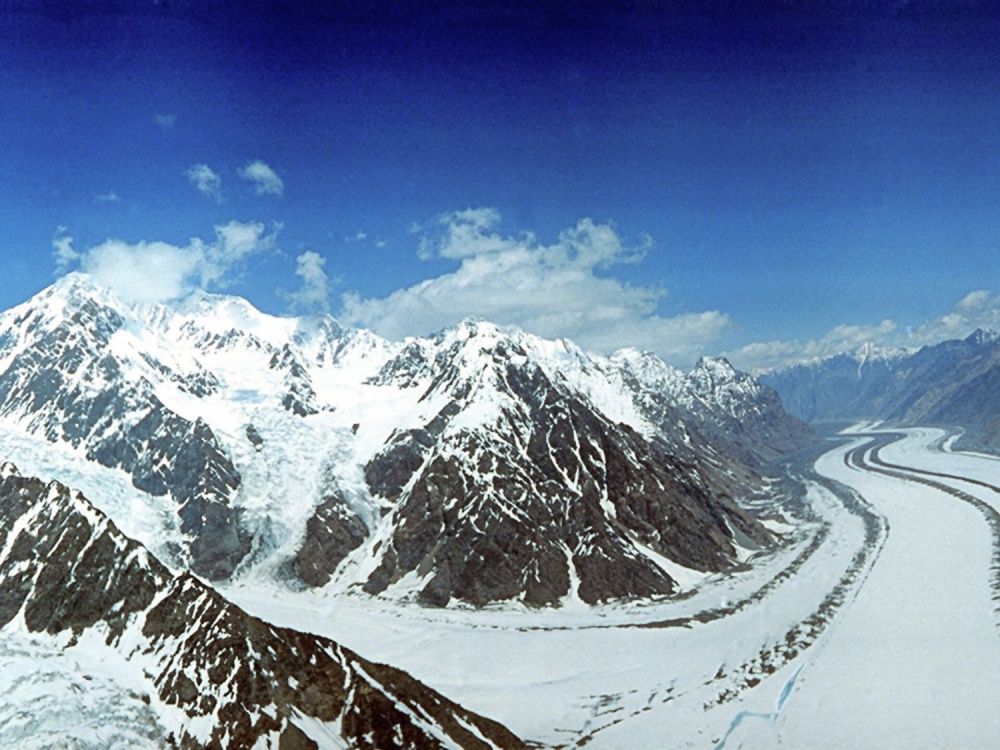GLACIER PROTECTION - DEMAND OF THE TIME
It is a pride and honor that another initiative of the Founder of peace and national unity, Leader of the nation, President of the Republic of Tajikistan his excellency Emomali Rahmon on glacier protection, which can have a positive impact on the sustainable development of society, which has received support of the international community. In his congratulatory message, Leader of the nation, President of the Republic of Tajikistan, Honorable Emomali Rahmon, dated December 16, 2022, noted that "December 14, 2022, the UN General Assembly unanimously approved our fifth water initiative by adopting a special resolution. According to this resolution, 2025 was declared the International Year of Glacier Protection. Second, March 21 will be celebrated annually as "World Glacier Day" from the beginning of 2025".
The UN has established an international target fund for glacier protection, according to which an international conference on glacier protection will be held in Dushanbe in 2025. This event is an important and historic step of the Head of State to continue the next initiatives in the field of sustainable development of water resources and glacier protection.
Melting of glaciers is observed today in all regions of the planet. It is known from mass media data that in many regions of the world the volume of glaciers is decreasing every year. In particular, the famous glacier of Mount Kilimanjaro in Africa has completely shrunk. The area of glaciers in Central Asia is 17-18 thousand square kilometers. The importance of glaciers in nature and human life is very great.
Glaciers are piles of natural ice on the ground, accumulated over years of snowfall, which are constantly in motion, moving from a few centimeters to tens of meters per day. Glaciers are a valuable resource, the main source of clean drinking water not only for the countries of Central Asia, but also for the whole planet.
According to available data, there are about 13 thousand glaciers in Tajikistan, the total area of which is 8476.4 square kilometers. Currently, almost one thousand glaciers have turned into water. These glaciers are located in the Western and Northern Pamirs and in the Gissar-Oloi Mountains at an altitude of 3000-3500 meters and provide 61.8 cubic kilometers of water to the rivers. The largest rivers of Tajikistan (Syr, Zarafshan, Pyandj, etc.) originate from glaciers.
In 2014, in order to protect glaciers in the republic, the "Center for Glacier Studies" was established, which organized expeditions to study the largest glaciers of the republic, including the Fedchenko Glacier.
Fedchenko Glacier is the largest mountain glacier not only in Tajikistan, but also in the whole world, which is included in the book "Earth Records". The length of this glacier is 77 km, area 650 km2, thickness 700-1000 meters, width reaches 3-8 km2 (average 1800 m). Its total volume is 93.8 square kilometers, it stores almost 10 square kilometers of water and has almost 50 tributaries. According to available data, there are about 13 thousand glaciers in Tajikistan, the total area of which is 8476.4 square kilometers. At present, almost one thousand glaciers have turned into water. These glaciers are located in the Western and Northern Pamirs and in the Gissar-Oloi Mountains at an altitude of 3000-3500 meters and provide 61.8 cubic kilometers of water to the rivers. The largest rivers of Tajikistan (Syr, Zarafshan, Pyandj, etc.) originate from glaciers.
In 2014, in order to protect glaciers in the republic, the "Center for Glacier Studies" was established, which organized expeditions to study the largest glaciers of the republic, including the Fedchenko Glacier.
Fedchenko Glacier is the largest mountain glacier not only in Tajikistan, but also in the whole world, which is included in the book "Earth Records". The length of this glacier is 77 km, area 650 km2, thickness 700-1000 meters, width reaches 3-8 km2 (average 1800 m). Its total volume is 93.8 square kilometers, it stores almost 10 square kilometers of water and has almost 50 tributaries.
Karimova A.R. - teacher at the department of sociology
translated Ismoilov R.

